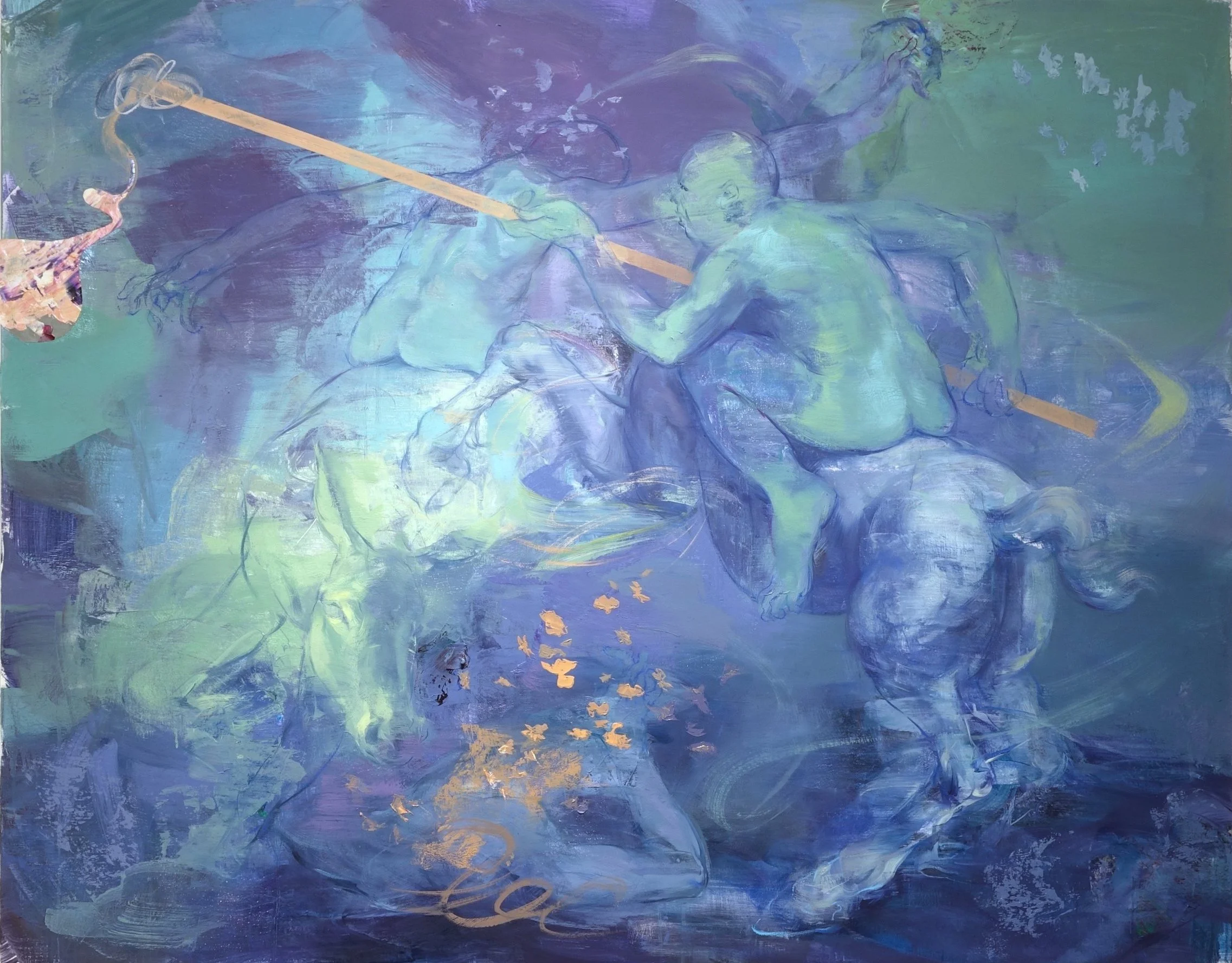Clara Grabowiecki is an Argentine visual artist, born in Buenos Aires in 1983. Her work is a journey into an interior cosmos. Passing through the figurative to the abstract, the images construct cosmologies of the imagination. Her images are recognisable by a confident colour palette of tropical tones and metallic glimmers that connect to a collective unconscious cultural psyche.
INTERVIEW | Ruoyu Gong
Ruoyu Gong is a New York-based painter. His work delves into the complexity of the human psyche in the theme of personal symbolism. Ruoyu sees painting as a way to uncover the veiled tensions within his psyche. Through this distillation process, he navigates the labyrinth of his psychological landscape that often lies dormant beneath the surface of daily life.
INTERVIEW | Rūta Matulevičiūtė
Rūta Matulevičiūtė is a painter and interdisciplinary artist. She is based in Vilnius, where, with five colleagues, she co-founded the artist-run space and studios "Tapytoju studijos". Her method is consciousness-based creativity with a focus on personal development. For this reason, she focuses on meditation, psychology, ancient traditions, and, most importantly, the broad Baltic mythology rooted in Indo-European culture.
INTERVIEW | Haoxuan Chen
Haoxuan Chen is a Chinese artist, based in Changsha. Chen Haoxuan often paints teenagers in different scenes, and those teenagers are symbolic and can be seen as his own narrative about himself. There will also be frequent images of black cats, for whom the black cat is symbolized by the other. These objects are very important to him, and they are related to them, and then uses strong colors to express their concern for their relevance.
INTERVIEW | Ayuna
Ayuna guides the people into her works through personas. In addition, she expresses the nature that exists as it is, that natural process of winding and unwinding, and the weak and the strong in an effort to make a barrier against the violence she got through. Through such a process, she would save herself. She also wishes that somebody who views her works would be empowered to live in this violent world.
INTERVIEW | Fotini Christophillis
Fotini Christophillis is an American painter based in Greenville, South Carolina. She explores the presence and absence of figurative suggestions, eliminating specific details in order to express a dream-like snapshot from her subconscious, a kind of cinematographic film still that’s neither “here nor there”. Her paintings are a reflection of her current experience as she seek to understand where she is and where she is going.
INTERVIEW | Patrick Vandecasteele
Patrick Vandecasteele explores the physical, psychological and social posture of humans, the various costumes they wear to dress their intimate hiatuses. He tries to restore the spontaneity of human posture, its fleetingness, the unconscious that inhabits a body and its outfit, the links between composure and thoughts, gestures and intentions, mental melee.
He paint our struggle to face others, to approach others, the struggle between our multiple intimacies, between our imperative of life in society, of submission to servitudes and the imperative need for autonomy, individuality.
INTERVIEW | Ulziitugs Enkhbold
Ulziitugs Enkhbold is a Mongolian artist currently based in Winnipeg, Canada. She works across multiple disciplines and her practice is primarily concentrated around identity and heritage. Her paintings are often completed in oil, while her sculptures are mainly ceramic. Her current body of work consists of oil paintings that analyzes the relationship between immigrants and their home countries.
INTERVIEW | Christina Michalopoulou
Christina Michalopoulou’s paintings are figurative, realistic human figures, and body parts in surrealistic environments. Christina often likes to bring realism, sometimes even photorealism, of her figures contrasting with an abstract, pop, or fictional background—a play of surrealism resemblance to a collage.
INTERVIEW | Augusto Poderosi
Augusto Poderosi was born in Rome. He works eclectically in the fields of figurative and audiovisual arts. Augusto started his activity in the laboratories of scenography at the Cinecitta Studios. He is also a sculptor, painter and restorer to the holy see he realizes numerous artistic patronage for the Basilica Papale di S.Paolo Fuori le Mura, di S.Antonio di Padova, Basilica Del Cristo Re (Rome) for the Vatican City and various other Roman churches.
INTERVIEW | Bogdan Murg
Bogdan feels an urge to paint, as he wants to make up for all the years he has not been painting. His style surfaced intuitively. Bogdan mostly identifies himself with Francis Bacon’s concept of a ‘tightrope walk between what is called figurative painting and abstraction.’ Each painting in multiple performances.






















